Master Crypto with a Coin Profit Calculator
Go beyond basic numbers. This guide shows you how to use a coin profit calculator to track ROI, account for fees, and inform your crypto trading strategy.

December 13, 2025
Wallet Finder

November 21, 2025
.avif)
Ethereum changed gears in September 2022. It switched from Proof of Work to Proof of Stake. This was a huge step for blockchain technology.
Before, miners burned lots of energy solving math puzzles. Now, validator nodes secure the network by staking their own ETH. This cut Ethereum’s carbon footprint by over 99% and laid the path for Ethereum 2.0 upgrades.
But DeFi traders don't see this transition as energy-saving. The reduced transaction gas fees, stable block times, steady staking rewards, and increased possible earnings via smart contracts are other benefits they get.
If you trade on cryptocurrency networks or use staking, this update shapes how you plan trades, manage risk, and spot new profit ideas.
Several wallets can already benefit from the low fees, liquid staking arbitrage, and transfers to those inexpensive Layer 2s. Wallet Finder.ai keeps track of such wallets and tells you what is working and what is not; no guessing required.
Let us further analyze how Ethereum’s Proof of Stake changes DeFi trading and how Wallet Finder.ai helps you follow wallets already benefiting from it.
Let’s unpack how Ethereum Proof of Stake works and why it matters for traders.
Before the Ethereum Merge, the network functioned based on Proof of Work. Miners threw huge amounts of electricity into block confirmations. That contributed to the energy use of cryptocurrencies and made gas fees unpredictable.
The validator nodes do this job instead in a Proof of Stake system. They lock up ETH, run the validator software, and secure the Ethereum blockchain network. The honest validators are rewarded with validator rewards. The bad ones will either get penalized or ejected from the set of validators.
This switch cut the network’s energy consumption by more than 99%. It’s a big win for the carbon footprint of cryptocurrency networks. It also sets the stage for future sharding, which means more transactions per second.
Block times changed, too. Blocks used to come every 13.3 seconds on average. Now they arrive every 12 seconds with less variance. This helps traders time swaps and arbitrage more accurately.
Gas fees are now going to validators instead of miners. This changes the incentives for MEV (Maximal Extractable Value). Traders need to be vigilant about validator cooperation and smart regarding sandwich attacks.
And there are staking rewards on top of that. With Ethereum staking, you earn a return on your ETH while it helps secure the network. Liquid staking provides this flexibility, allowing you to stake your ETH but receive a liquid token like stETH or rETH for trading or using in DeFi. Learning How to Track Whale Transactions in DeFi can help you spot large movements, anticipate market shifts, and optimize your strategies around staking and trading activity.
The Ethereum Foundation keeps improving this system. The Beacon Chain coordinates validator keys and the validator node set, keeping things secure and fair for everyone.
Ethereum Proof of Stake didn’t just clean up energy consumption. It changed how DeFi traders plan moves every day. Here are five direct impacts:
Prior to the Ethereum Merge, gas fees would pile beyond 100-500 gwei, on average. Now, the base fee has decreased to below 30 gwei in 2023. This allows for small swaps to make sense once again. Traders may, therefore, try to transfer Ethereum tokens or execute smart contracts without incurring high fees.
Block timing is now a neat 12 seconds. This is due to the validator set and the Beacon Chain. Such minimal variance helps arbitrage bots and liquidity providers since they know the precise timing of the new block, so slippage and bad fills are reduced.
In Proof of Stake, builders and validators replaced miners. MEV (Maximal Extractable Value) now migrates towards validator nodes, and we are experimenting with PBS (Proposer-Builder Separation). This changes how front-running takes place. Traders use MEV protection against potential hidden fees, such as Flashbots and MEV-Share.
Validators earn a normal staking reward of around 3% - 5% for locking their ETH. In liquid staking, while traders are making use of stETH or rETH to farm, they are still accruing that yield. They try to catch peg arbitrage by buying stETH below its ETH value, then pocketing the differing amount by which it re-pegs.
Proof of Stake is followed by pools with increased spreads and deeper liquidity. Such is confirmed by academic research. Big swaps in the market move less. Thus, traders bringing size in DEXes face less slippage cuts and better average fills.
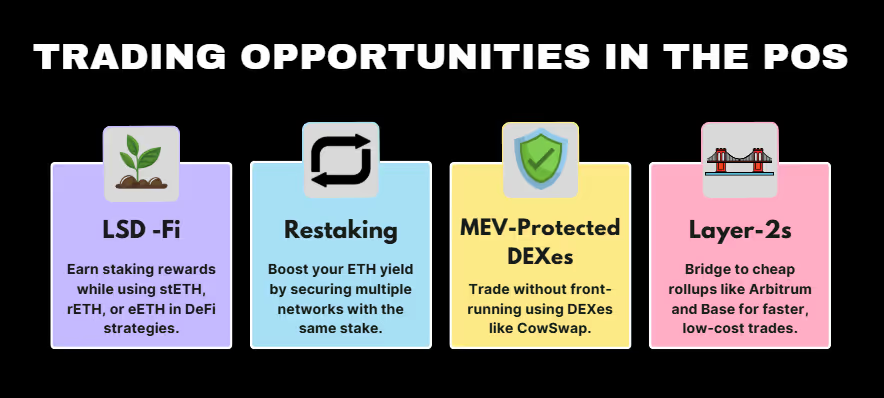
Ethereum’s shift to Proof of Stake didn’t just fix energy problems; it unlocked new ways to earn. Traders now have more tools to boost returns and lower risks.
In Ethereum staking, the ETH gets locked in validator nodes. With liquid staking, however, you would receive tokens such as stETH, rETH, or eETH. Such tokens are collateral usable in DeFi for farming, lending, for swapping.
Thus, your stake value extends to earning validator rewards while at the same time enabling DeFi trading. Wallet Finder.ai lets you track which wallets do LSD farming and which tokens generate the most profit.
EigenLayer adds another layer of yield. You take staked ETH, restake it, and secure it with other networks. Experimenting is still early, but it is gaining a lot of attention from DeFi traders who would want their ETH stretched even further.
If you follow whales and their initial EigenLayer strategies, Wallet Finder.ai helps flag them fast.
Sandwich attacks are a common problem on regular DEXes.
Several traders lose money to bots that are manipulating slippage. However, newer platforms like CowSwap and Uniswap X mitigate this loss by concealing transaction details or batch processing trades.
Wallet Finder.ai helps you keep track of which wallets are operating with these DEXes, meaning copying the low-risk batters and guarding against unexpected losses for profitable strategies.
Layer-2 chains like Arbitrum or Base now only borrow their security from Ethereum Proof of Stake. Gas is cheaper than before, swaps are quicker, and bridging ETH has become easier than before.
With the growing trend for moving wallets from mainnet to L2s, Wallet Finder.ai sends alerts every time a high-profit wallet makes that shift, giving a clear sign to follow.
These new opportunities exist because of Ethereum’s PoS upgrade. And WalletFinder.ai makes it easier to track who’s using them and how well it’s working.
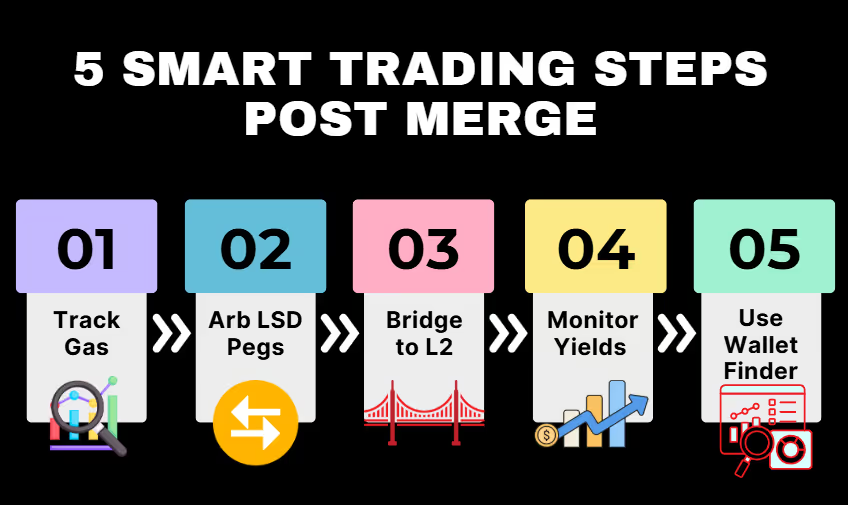
Ethereum Proof of Stake brings new dynamics to DeFi trading. Here is a simple playbook to make the most of it:
Ethereum’s average gas cost has decreased. However, timing is key. Thus, one should use dashboards to monitor base fees and position trades when gas is under 20 gwei. Lower gas = better profit margins for small trades and smart contract calls.
Monitor the spread between ETH and STETH, RETH, or EETH. These liquid staking tokens sometimes deviate from the price of ETH. A well-informed trade would mean buying low and selling again once the peg returns.
Rollups like Arbitrum and Base are cheap and fast. Use them for:
● Leverage trading
● Perpetuals (perps)
● Yield farming
They inherit Ethereum staking security but cost a fraction to use.
Not all validator nodes pay the same. Shift your ETH to validators offering high staking rewards and low commissions. Always use validator software backed by the Ethereum Foundation or trusted providers.
Not all validators pay equally. Move your ETH to validators that give high staking rewards and low commissions. Always use validator software backed by the Ethereum Foundation or trusted providers.
This is where Wallet Finder.ai becomes your trading edge:
● Spot wallets earning 40%+ APR from LSD strategies
● Get Telegram alerts when whales move ETH to Layer-2s
● Track your own gas costs against high-performing wallets
● See which validator set or smart contract strategies are working best
With this playbook, you are not just reacting to Ethereum 2.0; you are using it to stay ahead.
Ethereum Proof of Stake has introduced new layers to how traders earn, including validator rewards, staking yields, gas costs, MEV risk, and cross-chain moves. Tracking all this manually can be a tedious process.
Rather than stumbling around manually putting all the pieces together, Wallet Finder.ai allows you to see which wallets are already doing well, what strategies they are using, and where the next profitable move lies.
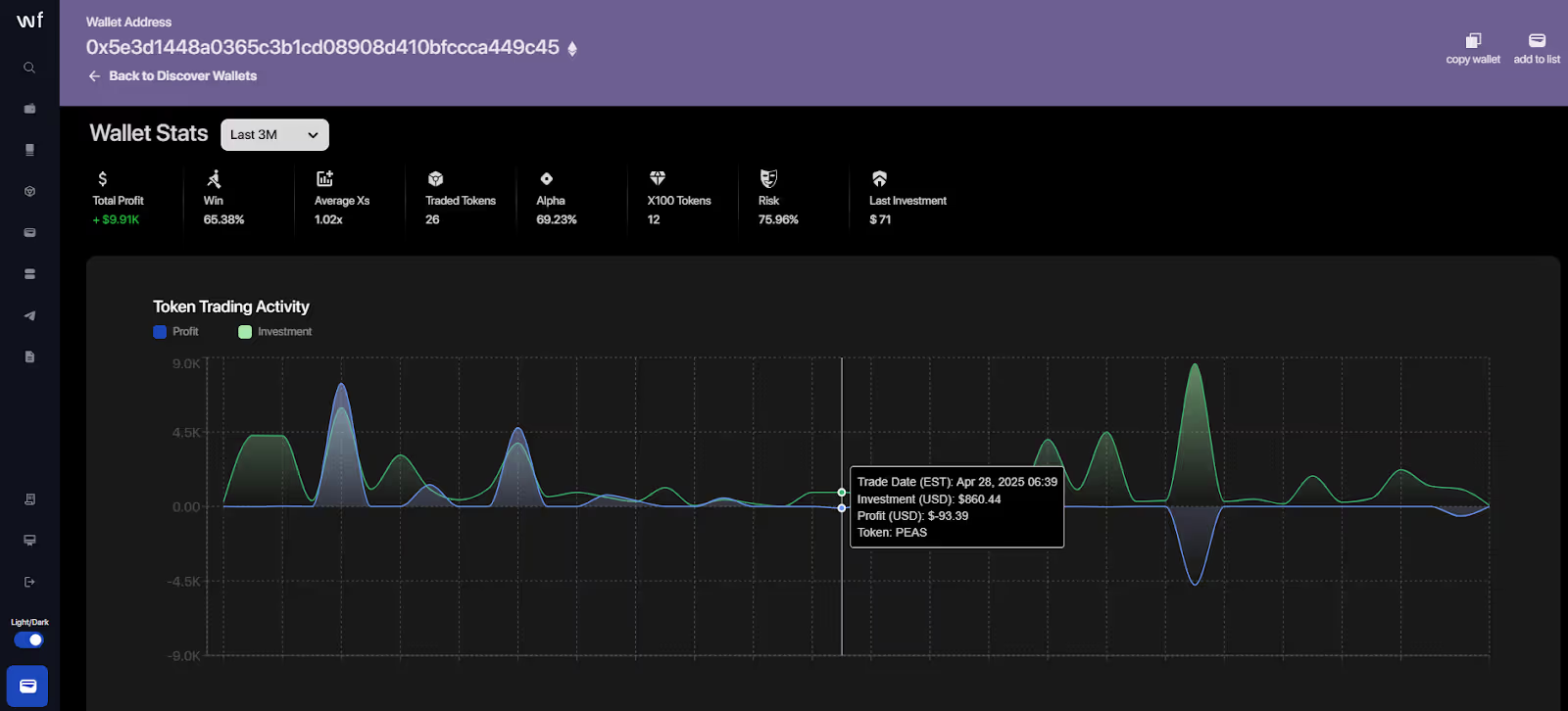
Rather than checking each blockchain analytics and every wallet separately, Wallet Finder.ai takes all of these into a single view. It shows P/I tracking from the Ethereum mainnet through rollups like Arbitrum (coming soon) and Base, down to liquid-staking positions like stETH or rETH. This helps you compare yield farming returns, validator rewards, and trading gains in one place, with no extra tools.
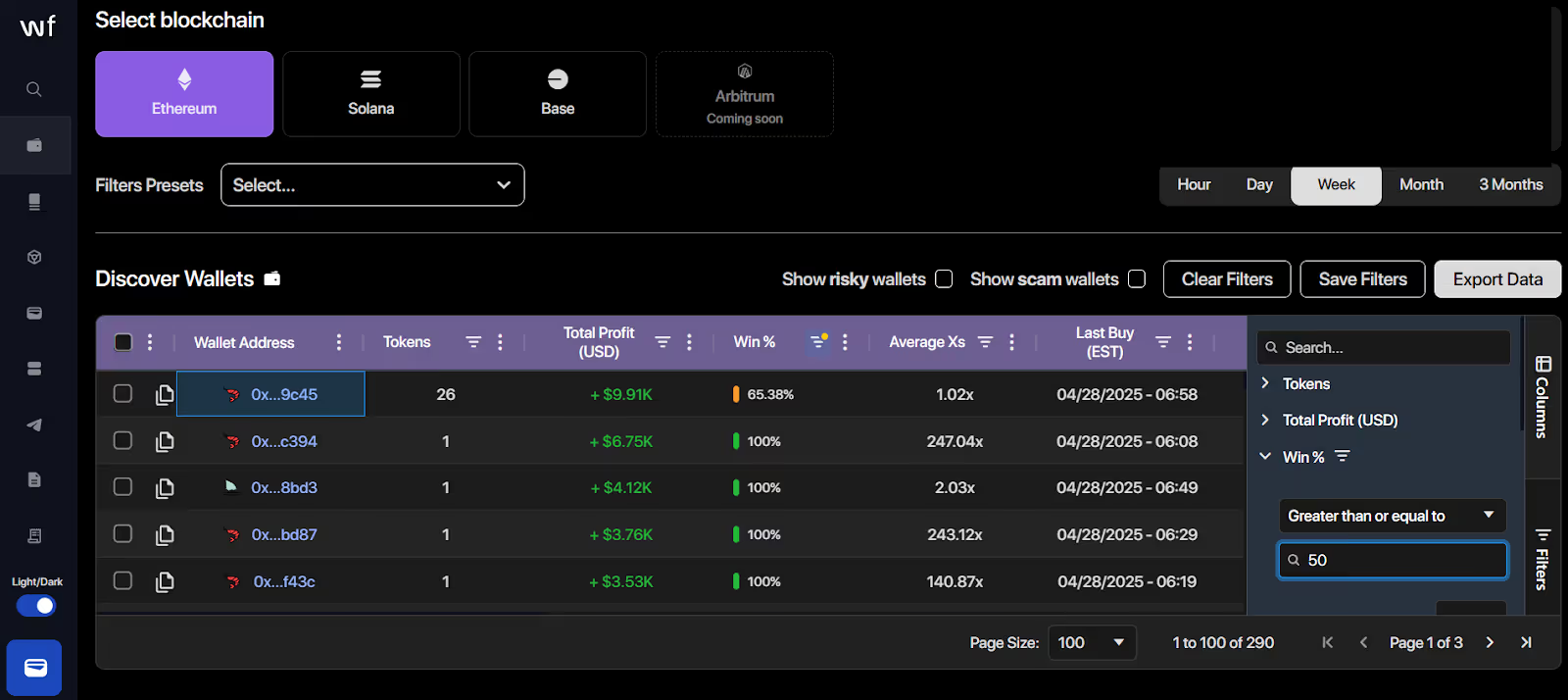
Wallet Finder.ai ranks wallets by realized net profit, not just token balances. You can apply filters to spot:
● Validators earning the most MEV payouts
● Wallets doing frequent LSD-Fi peg arbitrage
● Traders switching between Ethereum tokens at the right time
These filters help you avoid random trades and start copying what actually works.
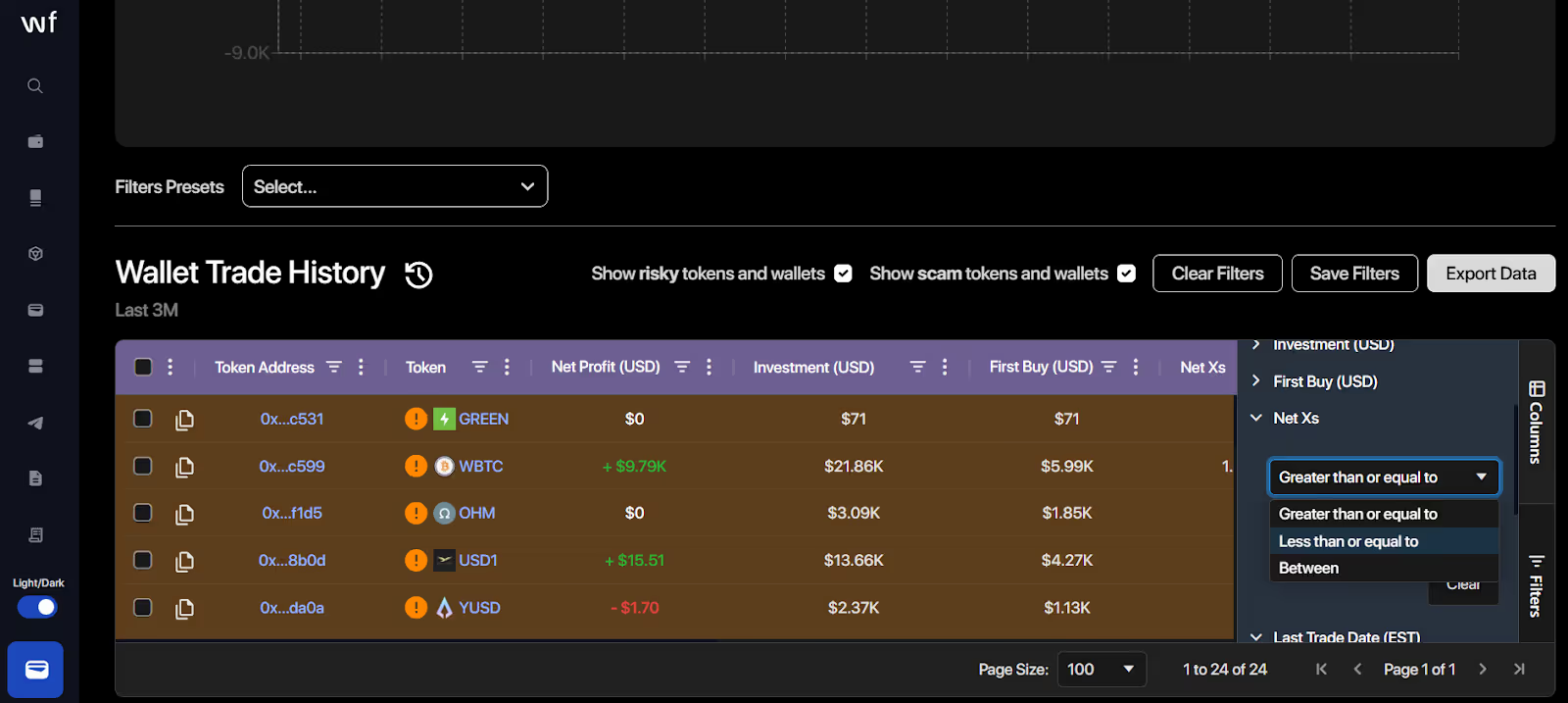
Every DeFi move costs gas, and Wallet Finder.ai shows what that means for your profits. It tracks ETH burned in fees, staking yield from Ethereum validator nodes, and profit after expenses. You can also see how your own wallet’s execution compares to high-performing addresses. If they’re bridging to L2 or changing validators, you’ll see it fast.
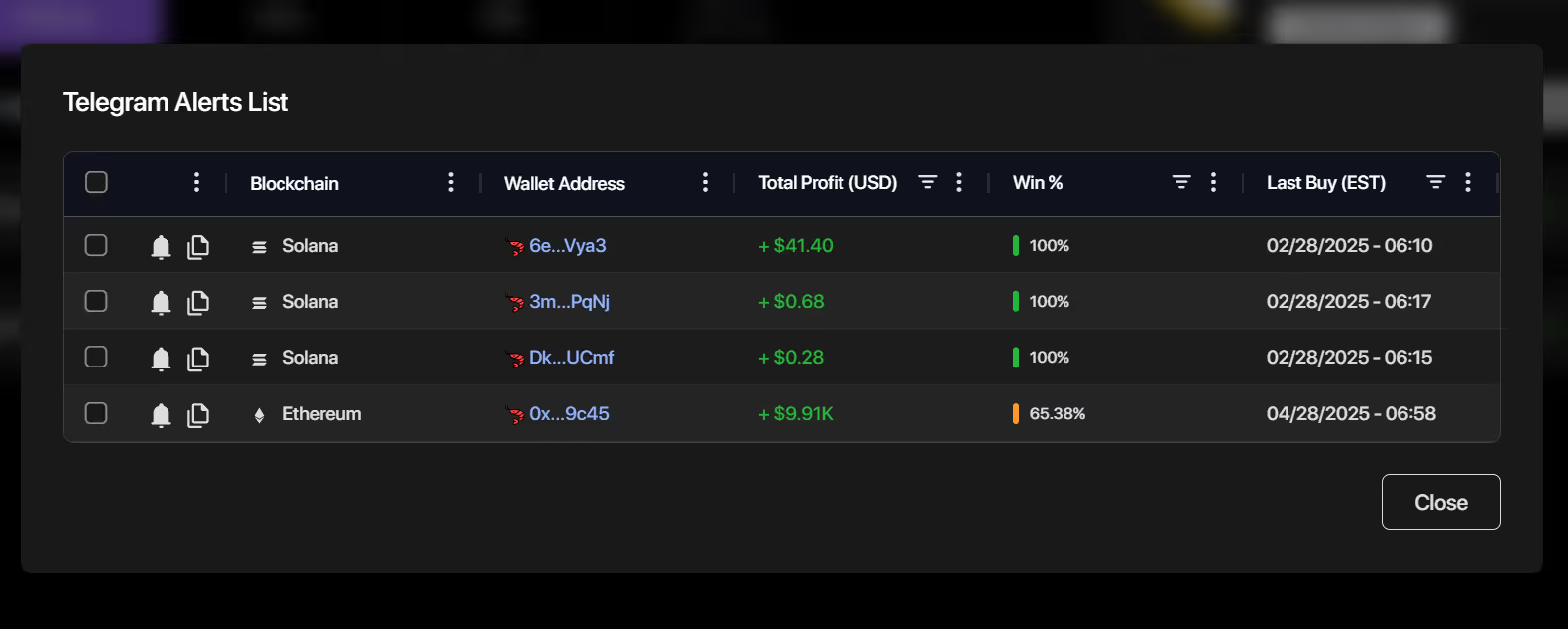
By connecting your wallet, you can view your own trading performance, trading history, and smart contract interactions. You can also build custom watchlists of wallets you want to follow, and get Telegram alerts when those wallets make trades or move ETH across chains. For more advanced insights, check out our post Top Tools for Scaling Backtesting Systems.
Ethereum’s switch to Proof of Stake has changed how trades get settled, how gas is paid, how rewards are earned, and how validator nodes shape the flow of value.
This provides DeFi traders with new ways to earn through staking rewards, peg arbitrage, MEV-safe trading, and Layer-2 efficiency. However, to keep up, you need more than just a strategy; you need visibility.
Wallet Finder.ai gives you that.
You can see how top wallets adjust to Ethereum 2.0 mechanics, track their moves, compare your results, and cut through the hassle. Whether you’re farming with stETH, bridging to Base, or trying to save on gas, Wallet Finder.ai helps you stay one step ahead.
Sign up for free, no credit card needed, and start following the wallets already winning in the PoS era.
"I've tried the beta version of Walletfinder.ai extensively and I was blown away by how you can filter through the data, and the massive profitable wallets available in the filter presets, unbelievably valuable for any trader or copy trader. This is unfair advantage."
.avif)
Pablo Massa
Experienced DeFi Trader